By Jackie McFarland
Analyzing the World’s Most Competitive Courses with Special Guests Hap Hansen and Guilherme Jorge
We’ve all ridden plenty of Grand Prix classes from our seats… in the audience. And thanks to modern technology we’ve watched the WEG courses via FEI.tv, the new USEF network and YouTube. But I had the chance to watch with Hap Hansen, who certainly knows what it’s like to ride those courses from the seat of the saddle. Plus in the midst of the competition I was able to converse with Guilherme Jorge, assistant to World Equestrian Games head course designer Conrad Homfeld. Through their experienced eyes, we analyzed the world’s most competitive courses from Lexington, Kentucky, home of the 2010 WEG.

Brazilian Jorge was honored to be a part of an impressive team of international designers, including course architect Richard Jeffrey from Great Britian and assistants American Anthony D’Ambrosio, Canadian Michel Vallaincourt and Christa Stormans from Germany. Seven other course designers joined this elite group plus an excellent jump crew of eight. They were truly a design team, with Homfeld asking for their suggestions and impressions of his designs and distance choices.
Jorge commented, “Homfeld’s courses use his knowledge and experience as a rider at this level and his course design experience. His speed course asked a lot of technical questions. It was a good test and interesting to watch. The tests got tougher on Tuesday, but he kept the less experienced riders in mind.” After our Wednesday interview, he was off to a meeting about Friday’s course.
DAY ONE: SPEED
After the warm-up round on Sunday evening where each rider had 90 seconds to get to know the arena, each day forward counted towards both the Team and Individual standings. Monday was a 1.50m speed class, with faults converted into seconds, so each of the 121 starters were scored according to their time. The placings worked as follows – the fastest overall time, which on this glorious Monday was Mario Deslauriers on Urico, was given a score of 0. His winning time of 71.25 was then subtracted from each subsequent score and that total was multiplied by .5. For example on this same glorious day, McLain Ward was second with a time of 71.79. The formula is: 71.79 – 71.25 = .52 x .5 = .27. That is the score McLain carried into Day Two.

The course theme was the ‘nature of Kentucky’ and the jumps were magnificent. Some memorable jumps were the line from fence five, a vertical with wings resembling mountain peaks to an impressive arch wall at fence six in tight four strides and a combination at 10a-10b made from plank board fencing.
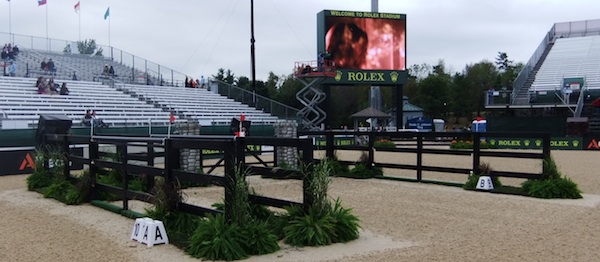
The last line of a liverpool vertical to Rolex combination caused quite a few four fault conversions, adding precious seconds onto riders scores.

DAY TWO: 119 INDIVIDUALS
Day Two was another all day affair – 119 horses passed through the timers. The cumulative scores from this day determined the ten teams that would compete in the Team Final Competition the following evening. I sat with Hap and watched each horse negotiate the brilliant 1.60m Thoroughbred industry-themed course. Hap had the following comments regarding the course, which you can see on the virtual map for 10/5/2010: Team Competition.
Fence 1: A big enough oxer with a nice approach to get everyone started.
Fence 2 –3: There was quite a bit of distance between fences one and two, a good opportunity to gallop in order to stay within the time allowed. However it was important to go far enough around the turn to meet it straight and ride the line, which even though there was a slight bend to the right it rode in a nice seven strides. A few riders rode it in eight.

Fence 4 –5a, b, c: A rollback turn to the left to a tall skinny vertical – a cool jump representing a film slate from Sea Biscuit – which was a careful fence. Best way to approach was to go wide but the time allowed made that difficult. You could see the ones that were confident, careful vertical jumpers who would shave the turn. From there a steady six bending strides to a tricky triple combination – oxer at A, in one to tall vertical at B, what measured a steady two to an oxer at C but rode in a variety of ways depending how much the horse backed up to jump the B element. Each element of the triple took its toll.

Fence 6: Pass the in-gate to the solid black wall. The fence represented a Win, Place, Show scoreboard from the Churchill Downs track and was an intimidating solid looking jump. Quite a few blocks fell.
Fence 7 –8: A sweeping left turn to a wide 4.30m (14′ 1″) water – with several options on the track – inside in seven, center to center in eight or wide in nine strides. This was also tricky as there were quite a good number of feet in the water. The water was set in a line walking long in four strides to a ‘light’ plank vertical that some chose to ride in the forward four and others in the steady 5 – may have been 50/50. Those who stepped in the water did the five. Most who jumped the water well kept going forward for the four.
Fence 9: Right hand turn to a green and gold Keeneland oxer at end of the ring. This was not a particularly difficult fence but it did come up fast after that difficult line. Due to this and because the horses were still forward after the last line and didn’t back off the front rail, it came down a surprising number of times. Like for McLain and Sapphire, it led them right into the front rail, that was the trap.
Fence 10: Rollback to the FEI purple vertical with jockey silks. Not too much trouble at this jump.
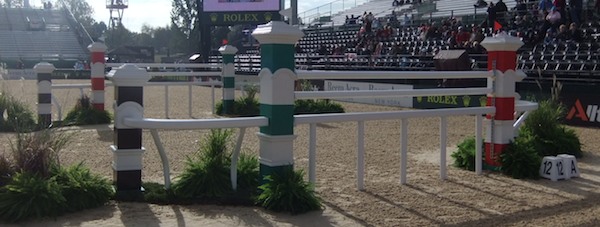
Fence 11 – 12A-B – 13: This last line was a difficult track and caused a good amount of rails. Fence 11 was a wide enough oxer then an option of a forward four strides or quite a few tried to collect the horse for a steady five to a very short and airy white vertical – vertical combination and finishing in a forward six stride bending line to a 1.90m (6′ 3″) wide Rolex oxer.
“Overall it was a brilliant course. Exciting to watch with great results. The presentation was beautiful,” noted Hansen. Of the 119 horses, just over 15% (17 horses) went clean; another four were close with one time fault. Nineteen more had just one rail. The remaining 79 horses had 5 faults or more.
DAY THREE: TEAM COMPETITION
So the results from yesterday were tallied – faults were added to the speed score – and the team totals were determined. The ten teams with the lowest cumulative scores competed in a final round on Wednesday night. Again the total number of faults each rider scored in the round were added to both the overall team score and their individual score. These totals resulted in both the final Team standings, awarded on Wednesday, as well as which riders were return for the top thirty on Friday night. The top four scoring riders after Friday’s class would compete on Saturday in the Final Four. Fifteen more rounds were added to Wednesday’s list – the fifteen best scoring individual riders that weren’t on a team competed for a score, to determine if they would make it to the top thirty individual competition.
The course wasn’t altered much from the one Hap analyzed on Tuesday, however the few changes were key as many riders experienced. Guilherme shared some of the slight height changes, with some jumps as high as 1.65m (5’5″). Fences # 2, 3, 6, 9 and 10 were raised and 5A was square when on Tuesday it was slightly ramped.

The difficult line mid-course from the open water to the plank vertical, fences seven to eight, changed to an equally difficult width test – a wide (2.20m or 7’3″) triple bar in a forward four or holding five strides to the plank vertical. This made your track from the wall at fence six extremely important and didn’t ride the same as a gallop to an open water, instead riders had to choose a track that would get them to the base of the triple bar and then they each had to know not only how far into the line the horse would land but as well how adjustable once inside. There were a lot of problems here, including the unfortunately long distance to the triple bar that came up for Mario Deslauriers and Urico, which ended up in a frightening crash where Urico sat down on the back side. The pair circled and recovered to finish the course.
Venezuela’s Pablo Barrios had the opposite problem; he rode beautifully across the triple bar and went forward for the four, which came up too long, and the pair plowed through the plank vertical. Both successful and experienced riders, these mishaps proved the challenges that the fifty-five entries encountered on course.
It was Germany’s night. They came in with a total score of 17.80 and with three of four teams riders going clean, the score remained the same for the win. France also had an excellent showing only adding 4 faults to their score, moving up from fifth to second. Belgium made a big jump from eighth to third only adding two points to their total score. It was not a great night for the US, although Laura Kraut did shine with a beautifully clean round.

DAY FOUR: INDIVIDUAL TOP 30, 2 ROUNDS
Displayed here is a nice representation of the track and the jumps used on this day. The jumps in black were used in Round One and in red are Round Two. Visually the theme was Iconic WEF and Kentucky, which the jumps beautifully illustrate. As a brief review, one of the most challenging lines was the final one in Round One, an oxer-oxer-vertical triple combination across the diagonal in line with the final jump. Most scores were between four and eight faults, with only five of the thirty riders going clean. In Round Two, the shortened course was slightly less technical and thirteen of the twenty-four who returned were fault free, including a great comeback by McLain Ward and Sapphire who jumped brilliantly in both rounds to move from a rank of 26th to 7th.
DAY FIVE: THE FINAL FOUR
Having watched this at the USET Talent Search Level multiple times it was quite amazing to see the stakes taken up several notches and see four of the world’s best riders ride each others horses over a 1.60m course. Again having the honor of sitting with Hap Hansen, we collectively thought that Hickstead would be the most difficult to ride. Although certainly strong and sometimes slightly out of control, he proved to be on his best behavior for the Final Four and was actually the best horse of the night. Abdullah Al Sharbatly and Rodrigo Pessoa each had surprising rails on their own mounts, but Sharbatly rode the other three horses like a pro and jumped into second place. Small mistakes if not just tired horses took a toll on Pessoa and Eric Lamaze who dropped to fourth and third respectively. Phillippe Le Jeune was simply stellar. Clean on each of the four rides, he was clearly the champion.
Both of my special guests agreed that it was a week of great sport. Jorge, who started the road to the WEG for the Americans when he designed all the WEG Trials in Wellington last winter, absorbed great knowledge from master course designers and riders, as well as contributing his own expertise. Along with keenly watching every horse and rider, Hansen also had a few days of fun socializing with friends from all over the world, shopping and experiencing Kentucky hospitality. I am thankful to them both. Course photos from Guilherme Jorge; course walk photo from Lisa Mitchell.
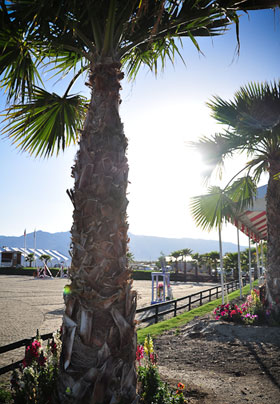

 In what seemed a newfound rhythm for the HITS Desert Circuit, the winter circuit sailed relatively smoothly for six straight weeks. With increased entries and a positive response from many of the competitors we approached, we asked what was the formula for success this year? Challenging course designers, well maintained footing, improvements and additions to the VIP areas, big money classes, and of course the grand prix highlights from fantastic afternoons to fabulous evening events.
In what seemed a newfound rhythm for the HITS Desert Circuit, the winter circuit sailed relatively smoothly for six straight weeks. With increased entries and a positive response from many of the competitors we approached, we asked what was the formula for success this year? Challenging course designers, well maintained footing, improvements and additions to the VIP areas, big money classes, and of course the grand prix highlights from fantastic afternoons to fabulous evening events.
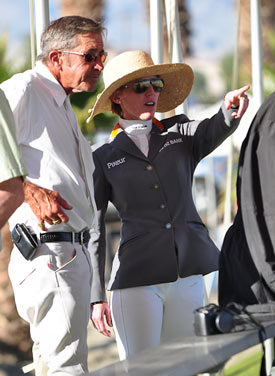
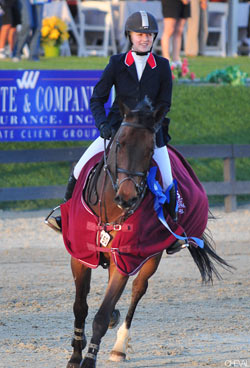









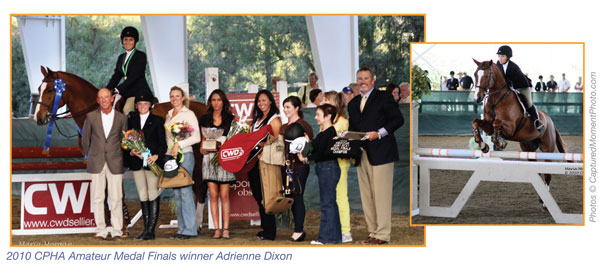
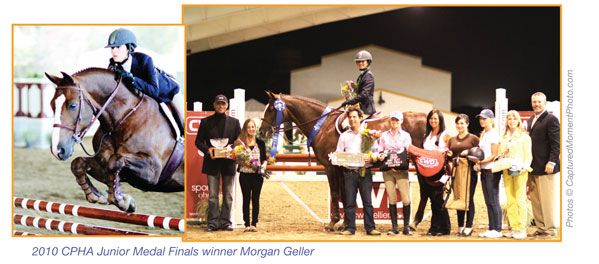
 If you’re on Facebook, view past articles and become an EquestriSol fan
If you’re on Facebook, view past articles and become an EquestriSol fan